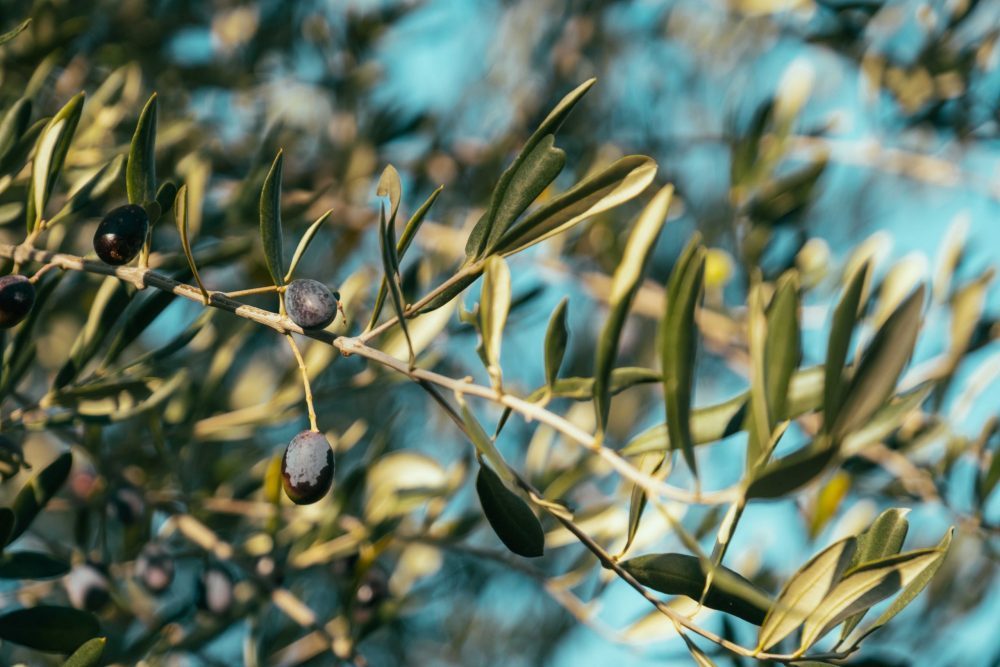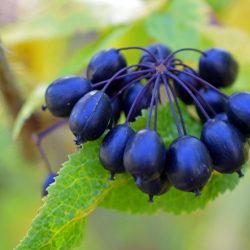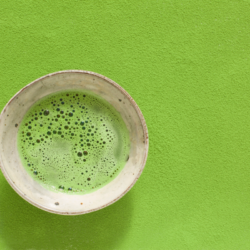The olive tree, an emblematic tree steeped in history and mythology, also has many little-known therapeutic powers. In this article, we invite you to explore the fascinating world of the olive tree, from its mythological origins to its contemporary medicinal applications. We begin our journey by going back to the mythological roots of the olive tree, with tales such as that of Heracles and the creation of the first olive tree, or the competition between Poseidon and Athena for the protection of Attica.
We’ll then cross the ages to discover the history of this tree, which originated in Asia Minor and is closely linked to the development of Mediterranean civilisations. We’ll see how, since ancient Greek times, the olive tree has been a precious source of both economic and cultural wealth.
But over and above its place in mythology and history, the olive tree is best known for its therapeutic properties. We will examine the medicinal virtues of olive leaves, in particular their beneficial effects on blood pressure, their role in vascular protection, and their antioxidant and anti-inflammatory properties. We’ll also look at precautions for use and advice on how to incorporate the olive tree into a healthy lifestyle.
A little mythology
The club ofHeracles (the man who became Romanised as Hercules) was made of olive wood, so he created the first of these trees after touching the ground… Long before Letô, there was an older oriental divinity, Lat ; goddess of fertility, olives and palm trees.
Poseidon and Athena quarrelled. The god with the trident claimed more earthly kingdoms, including Attica (the Greek region of which Athens is the capital). To settle the dispute, they were challenged to provide the city with the most useful, valuable and precious thing. Poseidon planted his trident in the ground, producing a well of salt water (some ancient texts even mention a fiery horse). Athena, not disarmed by this feat, already equipped with her spear, did the same, and at the point of impact an olive tree sprang up, spreading its branches. The gods supported Poseidon, the goddesses Athena, but Caecrops sided with Athena, while Zeus abstained, determined not to express an opinion on the matter. As a result, Pallas Athena prevailed over Poseidon, and the olive tree became the symbol of the city, which took its name from the goddess.
A little history
Originally from Asia Minor, the olive tree can be found throughout the Mediterranean basin, as well as in the Near East. But this is only an imported, cultivated olive tree. Archaeological digs have shown that the olive tree was already being harvested in the wild some 20,000 years ago, before it was cultivated during the Bronze Age, 4,000 years ago. The Phoenicians, then later the Greeks and finally the Romans, spread the olive tree throughout the Mediterranean.
It is impossible to imagine Greek antiquity without the symbol of the olive tree, bearer of the olive that provides oil, the preciousness of which meant that the best methods of preservation had to be devised and, after cultivation and harvesting, processes had to be devised that still exist today; the preservation of olives in brine, cold pressing and hot extraction were already known in pre-Hellenic Aegean times.
What are the main pharmacological properties of olive leaves?
Olive leaves are often used in phytotherapy for their beneficial pharmacological properties. In fact, they contain a variety of active compounds that can have positive effects on health. In this section, we will explore the main pharmacological properties of olive leaves and how they can be used to improve health.
Antihypertensive and vasculoprotective properties :
In 2002, an in vivo study on a hypertensive subject showed a dose-dependent normalisation of blood pressure after taking an extract of olive leaves.
A double-blind, randomised, parallel, active-controlled clinical trial conducted in 2011 also compared the effect of administering standardised olive leaf extract and captopril to stage I hypertensive patients for 8 weeks. Both drugs significantly reduced systolic and diastolic blood pressure, with no significant difference between the two groups of patients treated. A significant reduction between the two groups of patients treated. A significant reduction in triglyceride levels was observed in the olive group, but not in the captopril group.
A 2014 review of the literature confirms that the phenolic compounds present in olive leaves, in particular oleuropein, are associated with antihypertensive activity combined with antioxidant, hypoglycaemic, cholesterol-lowering and cardioprotective properties.
A randomised, double-blind, placebo-controlled crossover trial conducted in 2015 in 18 patients of both sexes showed that olive leaf extract improves vascular function and reduces the production of interleukin-8 (IL-8), an inflammatory marker involved in vascular damage.
A randomised controlled trial conducted by the same team in 2017 confirmed that phenolic-rich olive leaf extract significantly reduces blood pressure, plasma lipids (total and LDL cholesterol, triglycerides) and IL-8.
Antioxidant properties:
Flavonoids exert their antioxidant activity via their hydroxyl group. This action is generally due to the presence of triterpenes. Studies have shown the protective role of olive extracts in preventing reperfusion lesions following cardiac ischaemia, which are mainly generated by free radicals. A 2012 study showed that oleuropein can prevent ethanol-induced damage to the gastric mucosa by increasing the activity of anti-free radical defence enzymes (SOD, catalase, GPX) and reducing lipid peroxidation.
The good bioavailability of oleuropein and hydroxytyrosol contained in olive leaf was confirmed in 2013, with evidence of their presence in plasma after ingestion. The results were better in men than in women, and also better with liquid extracts than with those delivered in capsules. Hydroxytyrosol metabolites were found in urine after 8 hours.
By modulating oxidative stress, oleuropein is thought to have a potential protective effect on osteoporosis. A 2014 study carried out on pre- and post-menopausal women showed a better bioavailability of compounds that should be offered during the menopause to prevent processes linked to ageing and oxidative stress, such as osteoporosis.
Lipid-lowering and anti-atheromatous properties:
Olive leaf extract has an anti-atherogenic and cholesterol-lowering action, reducing LDL cholesterol, oxidised LDL and triglycerides.
This action also limits the development of steatosis and hepatic fibrosis. The reduction in blood lipid levels could in fact be due to an agonist action of olive oil on the bile acid receptor, TGR5.
Cardioprotective properties :
Olive leaf extract protects the myocardium not only by its lipid-lowering effect, but also by its antioxidant, anti-inflammatory, anti-atherosclerosis and anti-ischaemic activities. In vitro, it protects cardiomyocytes against the toxicity induced by 4-hydroxynonenal.
Anti-diabetic properties:
Olive inhibits alpha-amylase and alpha-glucosidase, due to its luteolin and luteolin derivatives content. The hydroxytyrosol and oleuropein contained in the leaf have an anti-diabetic effect, which may be due to their antioxidant activities. The latter compound therefore reduces the complications associated with diabetes.
A randomised, placebo-controlled crossover trial conducted in 2013 in 46 overweight middle-aged patients at risk of developing metabolic syndrome over a 12-week period showed that olive leaf polyphenols ultimately significantly improved insulin sensitivity and the secretory capacity of pancreatic β-cells.
Other properties :
- Antimicrobial action
- Anti-cancer action
- Thyroid-stimulating activity
- Anti-platelet aggregation
- Antispasmodic action on smooth muscles (intestine, trachea, arteries, etc.)
Are there any precautions to be taken when using Olive Tree?
When using medicinal plants, it is important to take certain precautions to avoid any undesirable side effects. Olive, although considered safe for general use, can also have adverse effects if used incorrectly. In this section, we will explore the precautions to be taken when using the olive tree for therapeutic purposes.
Contraindications :
- Diseases requiring reduced fluid intake (severe heart or kidney problems).
- According to the EMA, the use of olive oil is not recommended for pregnant or breast-feeding women in the absence of sufficient safety data to exclude any risk associated with its use. For the same reasons, the European agency states that its use in children and adolescents under the age of 18 has not been established.
Drug interactions :
- Very moderate pharmacokinetic interactions of oleuropein with cytochromes P450 (weak inhibition of CYP1A2)
- Weak inhibition of maslinic acid on CYP3A4 activity, low risk of drug interaction
- Potential pharmacodynamic interactions with antidiabetic and antihypertensive drugs
How should Olivier be taken and at what dosage?
To take full advantage of the therapeutic benefits of the olive tree, it is important to know how to take it and at what dosage. Using a medicinal plant inappropriately can not only diminish its beneficial effects, but can also have negative consequences for your health. In this section, we will look at the different forms in which the olive tree is available, the recommended dosages and the appropriate methods of administration for safe and effective use.
Dry form :
- As a dietary supplement, in the form ofdry extract in capsules.
Liquid form :
- Standardised fresh plant fluid extract: 5 to 10 ml per day in a glass of water.
- Bud macerate: 3 times 5 drops to be taken during the day.
- Glycerine fluid extract: 3 ml per day in a little water.
- Herbal teas: 40 to 50 g/L, decocted for 10 minutes or infused for 20 minutes, 1 cup 2 to 3 times a day.
Medical literature and clinical trials:
- Vogel P., Polyphenols benefits of olive leaf (Olea europaea L) to human healf, Nutr Hosp, 2014
- Susalit E. et al, Olive (Olea europaea) leaf extract effective in patients with stage-1 hypertension: comparison with Captopril, Phytomedicine, 2011
- Somova L.I. et al, Antihypertensive, antiatherosclerotic and antioxidant activity of triterpenoids isolated from car Olea europaea, subspecies africana leaves; J Ethnopharmacol, 2003
- Hansen K. et al, Isolation of an angiotensin converting enzyme (ACE) inhibitor from Olea europaea and Olea lancea, Phytomedicine, 1996
- Benavente-Garcia O. et al, Radioprotective effects in vivo of phenolics extracted from Olea europaea L. leaves against X-ray-ray-induced chromosomal damage; comparative study versus several flavonoids and sulphur-containing compounds, J Med Food, 2002
- Manna C. et al, Oleuropein prevents by ischemia and reperfusion, J Nutr Biochem, 2004
- Sato H. et al, Anti-hyperglycemic activity of a TGR5 agonist isolated from Olea europaea, Biochem. Biophys Res Commun, 2007
- Furneri P.M. et al, In vitro antimycoplamal activity of oleuropein, Int J Antimicrob. Agents, 2002
- Bisignano G. et al, On the in-vitro antimicrobial activity of oleuropein and hydroxytyrosol, J Pharm Pharmacol, 1999
- El S.N. et al, Olive tree (olea europea) leaves: potential beneficial effects on human heath, Nutr Rev, 2009
- Efentakis P. et al, Effects of the olive tree leaf constituents on myo car dial oxidztive damage and atherosclerosis, Planta Med, 2015
- Bali E.B. et al, Olive leaf extracts protect car diomyocytes against 4-hydroxynonenal-induced toxicity in vitro ; comparison with oleuropein, hydroxytyrosol, and quercetin, Planta Med, 2014
- Eddouks M. et al, Phytotherapy in the Management of Diabetes and Hypertension, Bentham Science Publishers, 2012
- De Bock M. et al, Olive (Olea europaea L.) leaf polyphenols improve insulin sensitivity in middle aged overweight men ; a randomized, placebo-controlled, crossover trial, PLoS One, 2013
- Lockyer S. et al, Impact of phenolic-rich olive leaf extract on blood pressure, plasma lipids and inflammatory markers ; a randomised controlled trial, Eur J Nutr., 2017
- Lockyers S. et al. Secoiridoids delivered as olive leaf extract induce acute improvements in human vascular function and reduction of an inflammatory cytokine; a randomised, double-blind, placebo-controlled, cross-over trial, Br J Nutr., 2015
- Garcia-Villalba R. et al. Bioavailability of phenolics from an oleuropein-rich olive (Olea europaea) leaf extract and its acute car effect on plasma antioxidant status; comparison between pre- and post- menopausal women, European journal of nutrition, 2014







